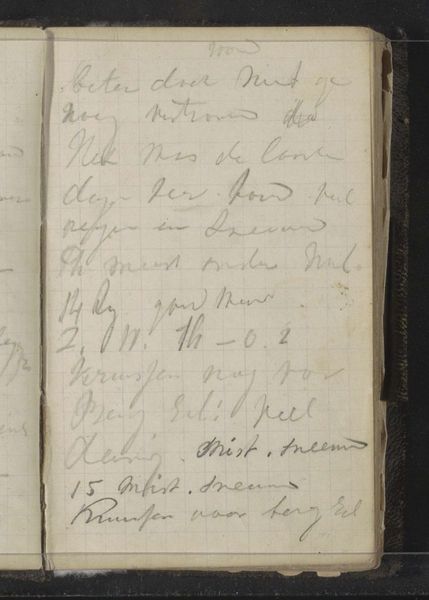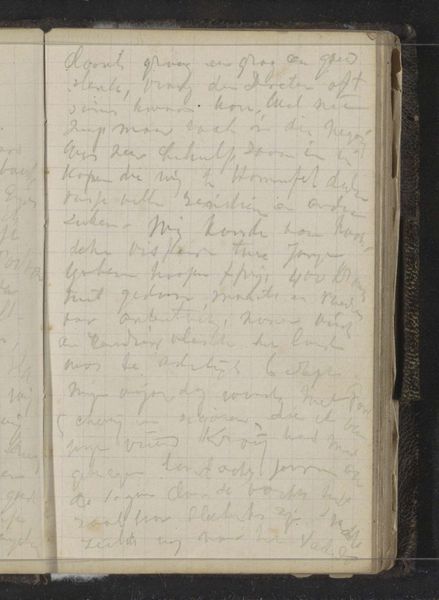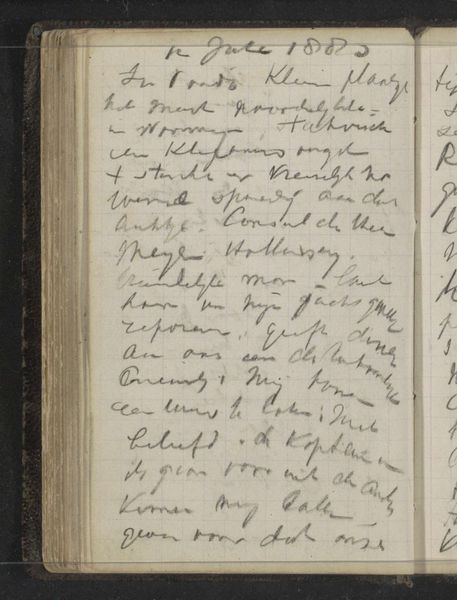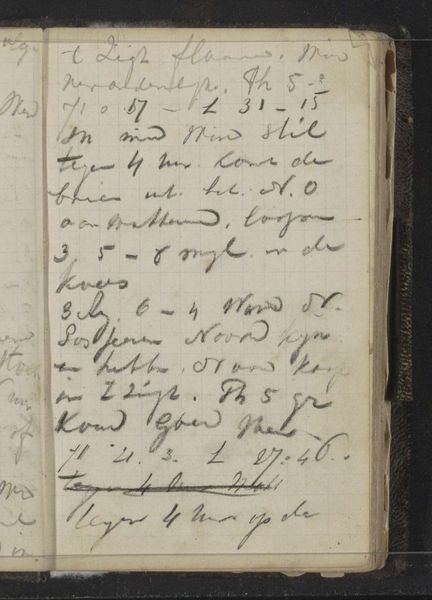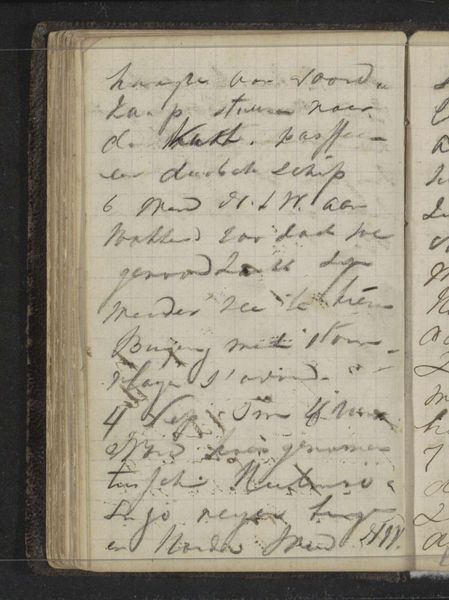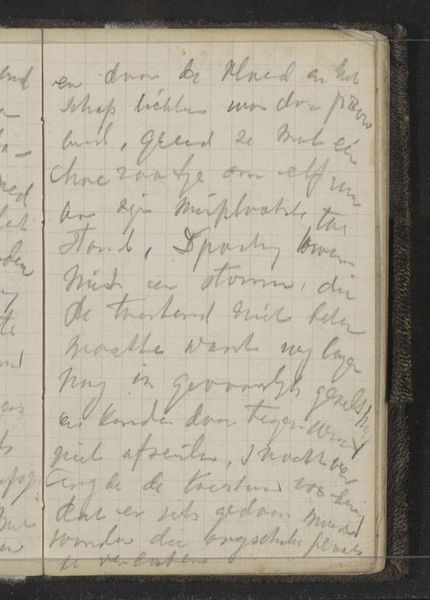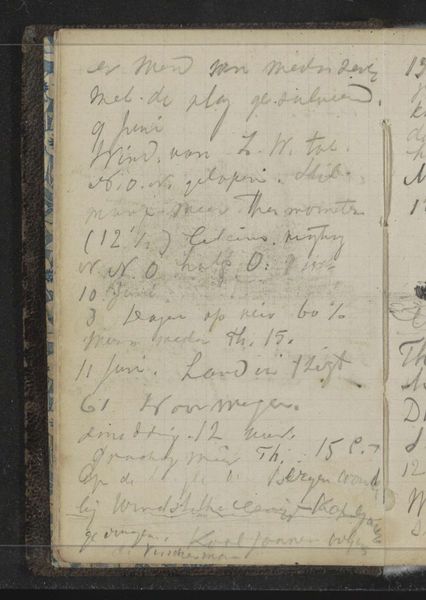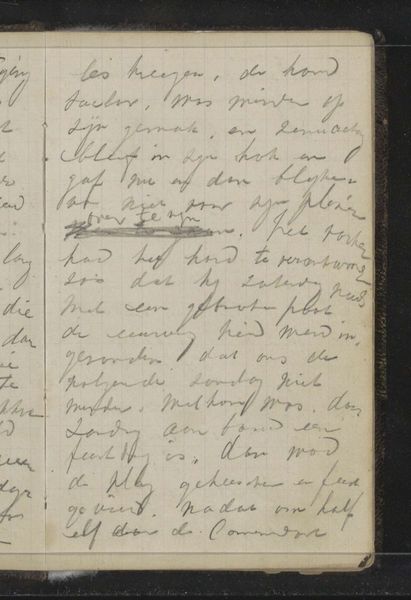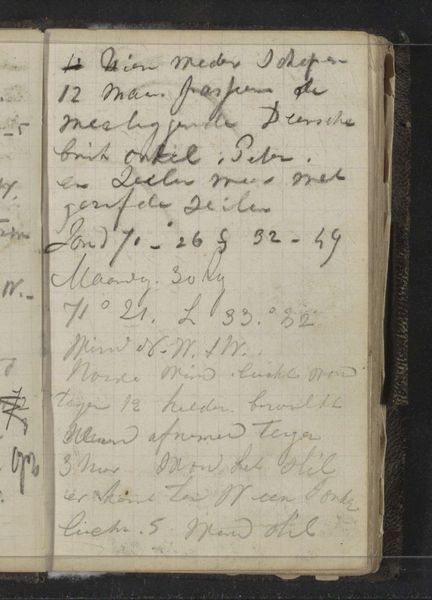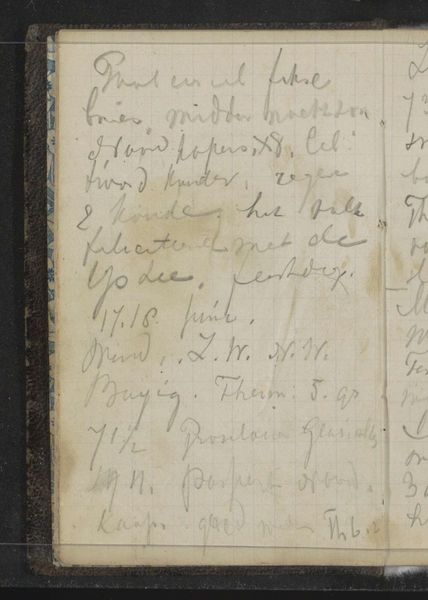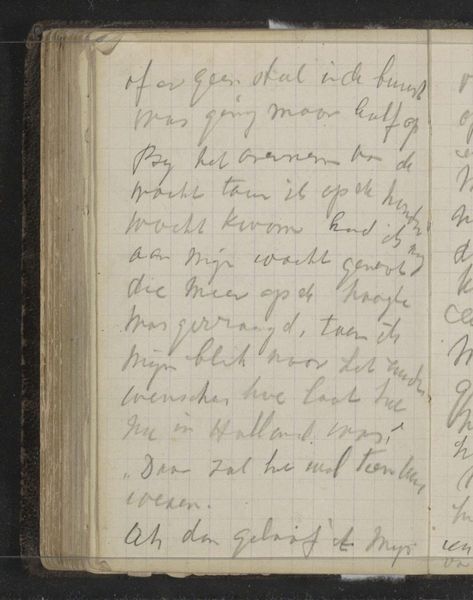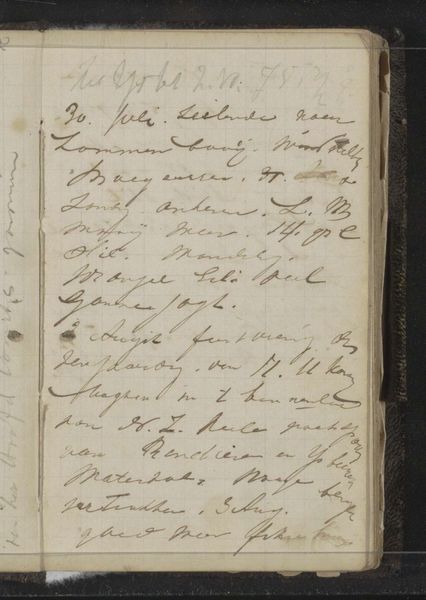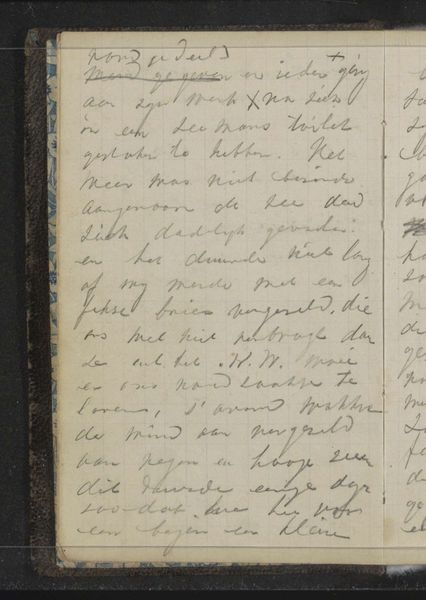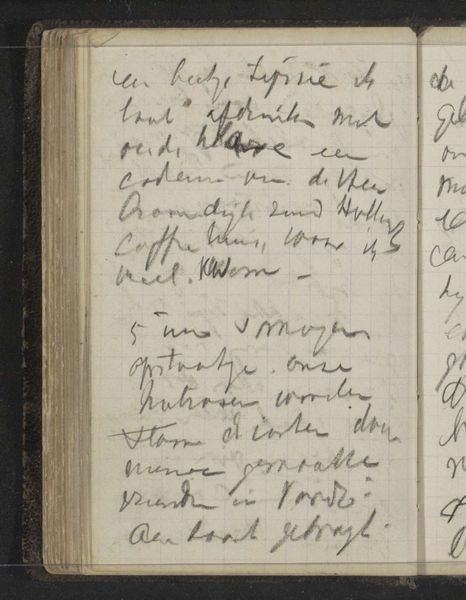
Copyright: Rijks Museum: Open Domain
Editor: So, here we have Louis Apol's "Reisverslag" from the 1880s, a sketchbook page with ink on paper. What strikes me is how intimate it feels, like a private glimpse into the artist's mind. What do you see in this piece? Curator: I see a confluence of personal reflection and social commentary, particularly relevant to our understanding of 19th-century travel and identity. These sketchbooks, especially those produced during journeys, were sites where individuals grappled with their place in a rapidly changing world. Apol was making notes that reflect experiences and observations within a context of colonial expansion, industrial transformation, and burgeoning nationalism, ideas also rooted in Romanticism. What perspective do you think Apol brings as an artist using a personal journal? Editor: I suppose it gives him the freedom to explore his thoughts and reactions honestly. Were sketchbooks like these ever intended for public view, or were they more private spaces for artists? Curator: That's an important question. While some artists did share excerpts or adaptations of sketchbook material, many used them primarily as personal repositories for ideas and impressions. So, when we engage with this work, we are, to some extent, invited to interrogate the very notions of authorship, audience, and the creation of value. To whom does a travel story really belong? Who controls the narrative and the image? What might his written impressions reveal that his paintings do not? Editor: That’s fascinating, it encourages us to think critically about art as a reflection of society's power dynamics, and, at the same time, as intimate expression. Curator: Exactly, and it challenges us to deconstruct the layers of meaning embedded within seemingly simple sketches and notes.
Comments
No comments
Be the first to comment and join the conversation on the ultimate creative platform.
